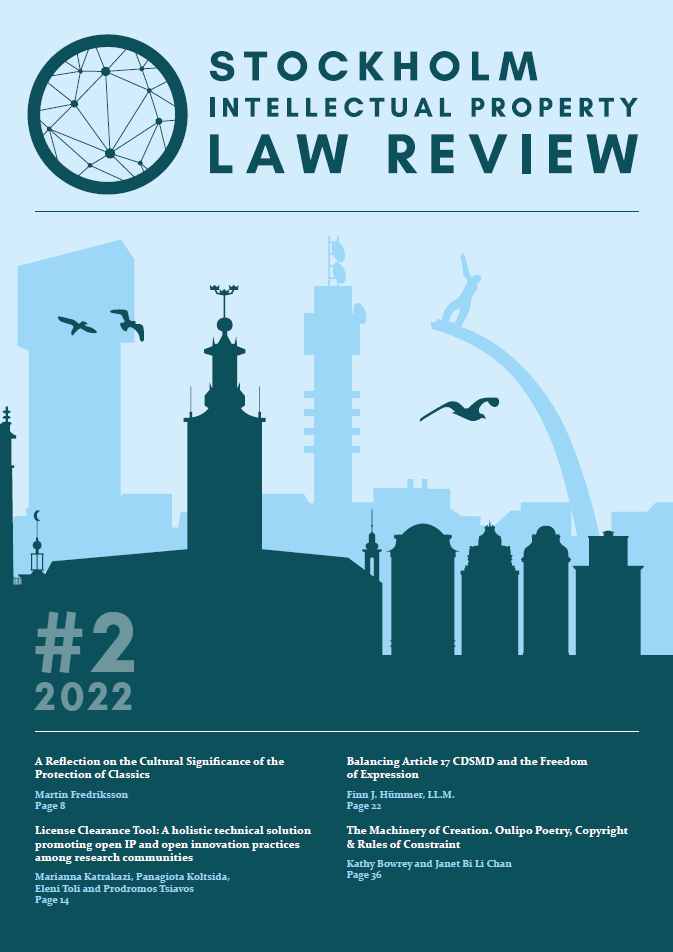A Reflection on the Cultural Significance of the Protection of Classics
DOI:
https://doi.org/10.53292/5302849b.baaf8ff7Abstract
This article applies a cultural perspective on § 51 of the Swedish Copyright Act, which prohibits the rendering of works in the public domain ‘in a way that offends the interests of spiritual cultivation’ (SFS 1960:729). This so called ‘protection of classics’ was formulated in the 1950s to protect classical works against derogatory interpretations, such as popular cultural adaptions. § 51 has rarely been applied, but in 2021 it was for the first time tried in court as the nationalist website Nordfront was accused of violating §51 by publishing works by three prominent romanticist poets in a context bordering on hate speech. The court ruled that the publication was not a violation of § 51, which calls the future of the protection of classics into question. Even though §51 might soon be obsolete, it raises a number of questions regarding the relation between law and culture. This article discusses what the protection of classics and the Nordfront case can tell us about cultural change in postwar Sweden if it is approached as a cultural rather than a legal text and studied not primarily as a legislative process but as a process of meaning making. The article makes no attempts to conduct such an analysis but rather aims to introduce the perspective and present preliminary reflections on how the formulation and use of protection of classics reflects changing conceptions of cultural norms and values.
Downloads
Published
How to Cite
Issue
Section
License
Copyright (c) 2023 The Author

This work is licensed under a Creative Commons Attribution 4.0 International License.







